Key takeaways:
- Organic wine production promotes healthier ecosystems and emphasizes sustainable practices, benefiting both the environment and wine quality.
- Key principles include biodiversity, organic fertilizers, and sustainability, which contribute to robust vineyard health and flavor.
- Effective techniques for soil management and pest control—such as cover cropping and using beneficial insects—enhance vineyard resilience.
- Measuring success involves observing plant health, assessing crop density, and evaluating the quality of the wine produced from healthy vines.

Introduction to Organic Wine Production
Organic wine production is a fascinating journey, intertwining agricultural practices with a profound respect for the environment. I remember visiting a vineyard that solely used organic methods; the air was filled with the intoxicating scent of ripe grapes, and it instantly drew me in. How amazing is it to think that the beauty of wine starts with healthy soil and natural biodiversity?
In my experience, organic wines often reflect the unique character of their terroir, a French term that emphasizes how local conditions shape grapes. I once tasted a Pinot Noir from an organic vineyard and was mesmerized by its vibrant aromas and depth of flavor. Have you ever noticed how a sip of wine can vividly transport you to the place where it was grown? That’s the magic of organic practices at work, allowing nature to shine through in each bottle.
Organic wine production also emphasizes sustainable practices, which are increasingly vital in today’s world. It feels rewarding to support a process that minimizes chemical inputs and enhances ecological balance. Isn’t it comforting to know that with every glass of organic wine, I’m contributing to a healthier planet? By choosing organic, we not only savor exceptional flavors but also nurture our environment for future generations.
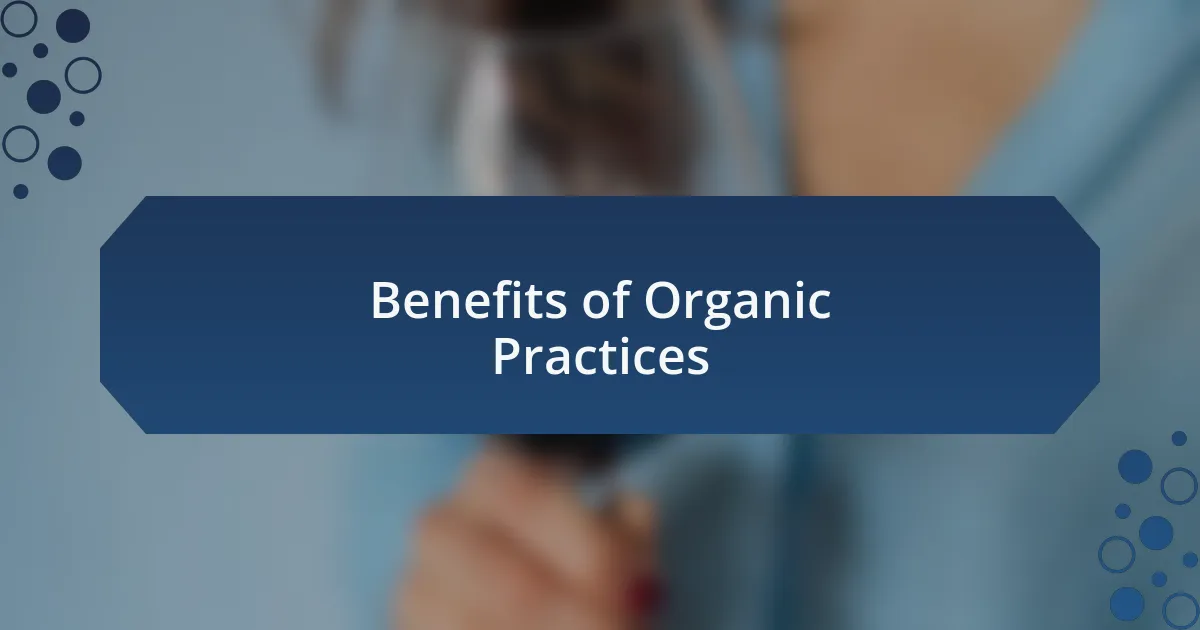
Benefits of Organic Practices
Organic practices offer a remarkable benefit: healthier ecosystems. I recall walking through an organic vineyard, amazed by the thriving insect populations that naturally controlled pests. Isn’t it incredible how nature can find its balance when we step back and allow it to flourish?
One of the standout advantages of organic farming is the resilience it builds within both the grapevines and the soil. I remember a particularly tough season when neighboring conventional vineyards struggled with disease, while the organic vines in my favorite vineyard stood strong. How empowering it is to witness the tenacity of nature when given the right conditions!
Moreover, organic vineyards often prioritize flavor over yield. I vividly recall savoring a glass of organic Merlot and being struck by its complexity and depth, far surpassing any mass-produced counterpart I’d had. Isn’t it fascinating how organic practices can elevate the tasting experience, making every sip a celebration of nature’s authenticity?
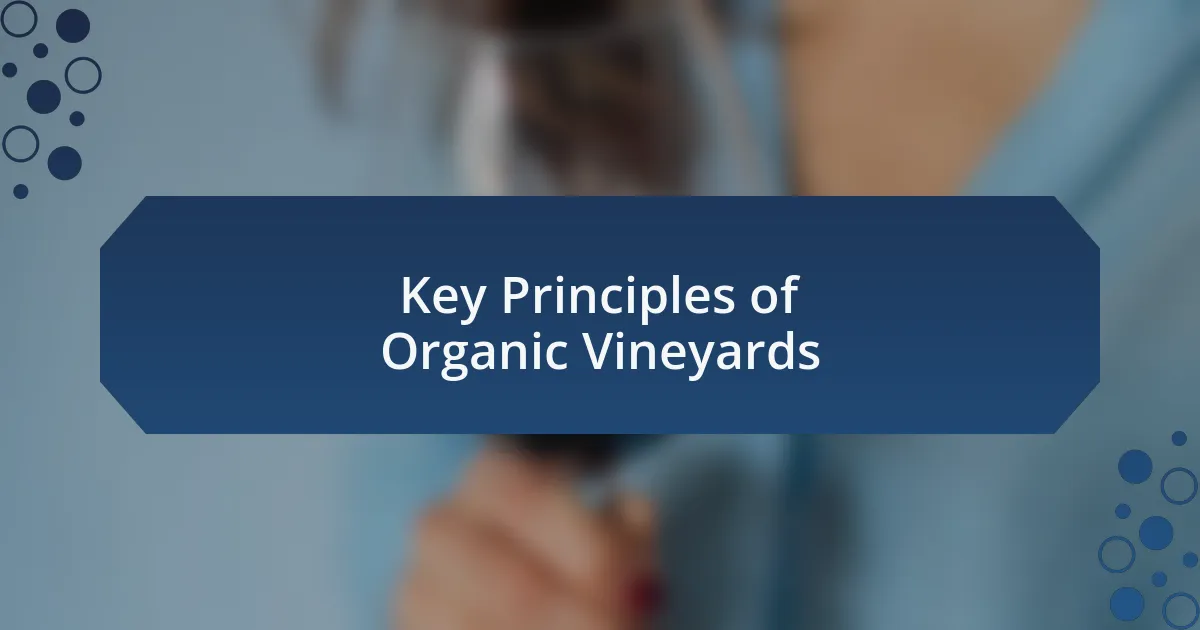
Key Principles of Organic Vineyards
Organic vineyards adhere to several key principles that set them apart from conventional practices. For instance, I recall visiting a vineyard that emphasizes biodiversity, where various plants mingle with the vines. This diversity isn’t just visually pleasing; it creates habitats for beneficial insects that help in pest control, showcasing a natural method of maintaining vineyard health.
Another principle is the use of organic fertilizers and composts. I’ve seen firsthand how these natural inputs nourish the soil over time, enhancing its structure and fertility. Instead of a quick chemical boost, it’s like nurturing a relationship—developing a deeper bond with the earth that pays off in robust grape quality.
Sustainability is also a hallmark of organic vineyards. I fondly remember discussing with a vineyard owner how they implemented water conservation techniques, using cover crops and mulching to retain moisture. It was inspiring to see how they connect environmental stewardship with their wine production, creating a legacy that transcends generations. Isn’t it refreshing to know that we can produce exquisite wines while still respecting our planet?
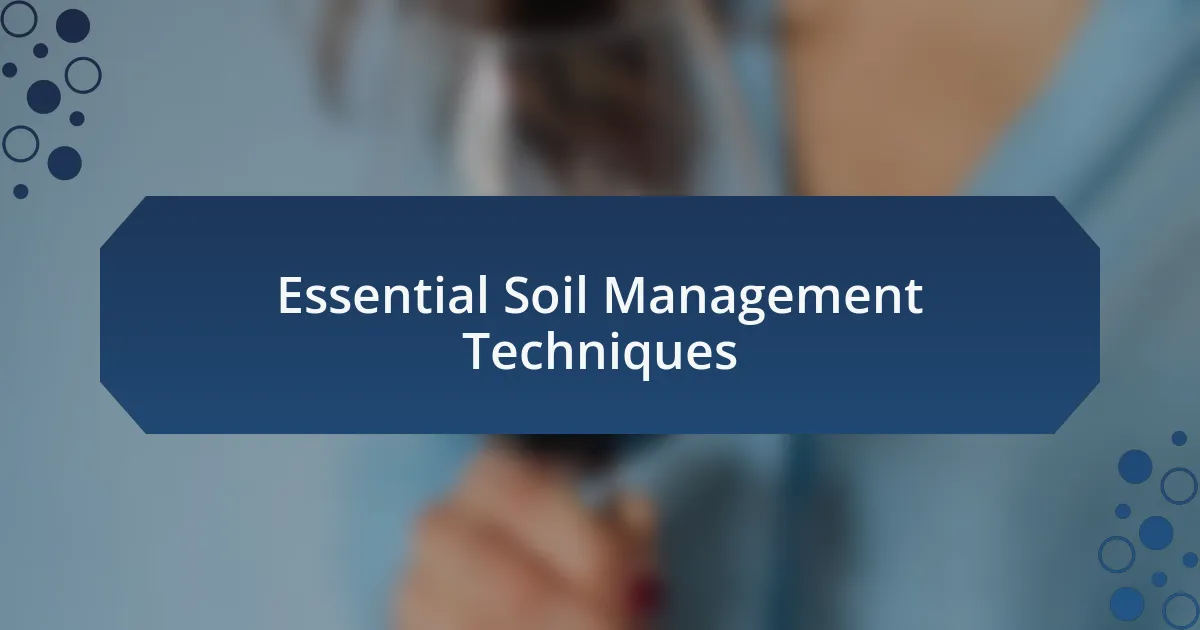
Essential Soil Management Techniques
To maintain healthy soil in organic vineyards, implementing cover cropping is essential. I remember walking through a vineyard where the ground was lush with diverse plants between the rows of vines. This not only protected the soil from erosion but also enhanced microbial life and improved nutrient cycling. Have you ever seen how green cover crops can transform an otherwise bare field into a vibrant ecosystem?
Another technique I’ve found invaluable is the practice of compost application. In one vineyard I visited, the owner made their own compost from vineyard waste and local materials. Witnessing the transformation from discarded plant matter to rich, earthy compost was eye-opening. This not only improved the soil structure but brought back nutrients that were depleted over time. It’s like giving the soil a well-deserved spa day!
Lastly, I’ve learned that regular soil testing can provide remarkable insights. I once joined a farmer during the testing process, and the excitement in their eyes as they discussed the results was contagious. Knowing what your soil needs and understanding its unique characteristics allows for targeted interventions. Why guess when you can have the data guiding your decisions?
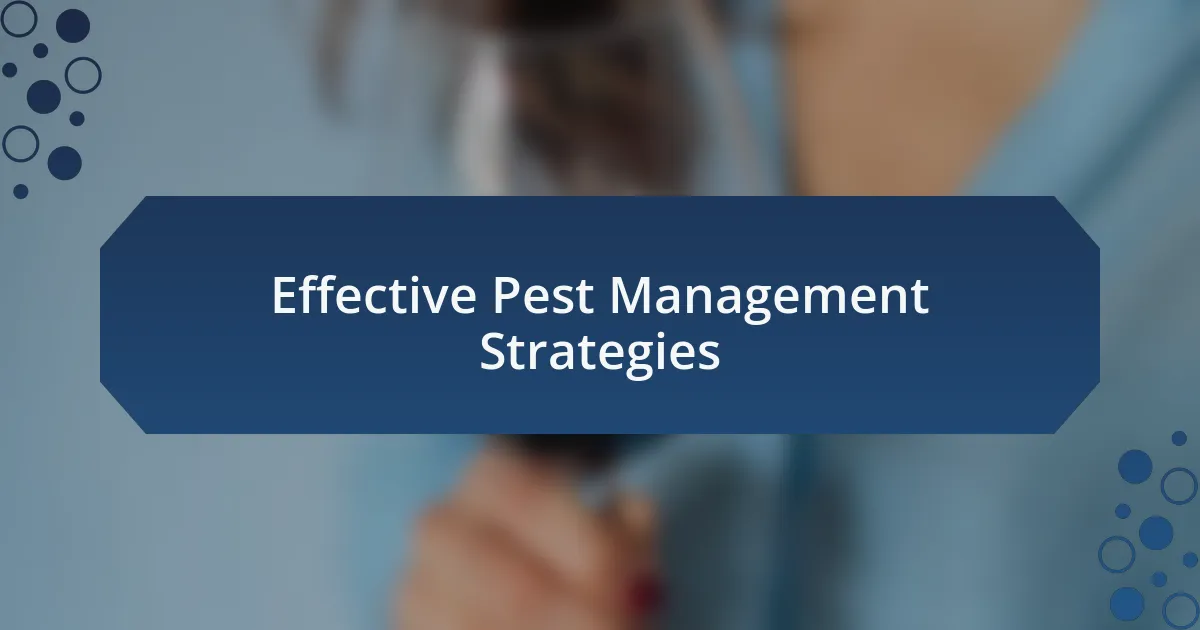
Effective Pest Management Strategies
One of the pest management strategies I’ve found particularly effective is the use of beneficial insects. I still recall the first time I released ladybugs in a vineyard; watching them swiftly patrol the leaves, eagerly munching on aphids, was nothing short of a revelation. Have you ever experienced that satisfying moment when nature takes the reins, working to protect the vines without synthetic chemicals?
I’ve also seen great success with plant diversity as a natural deterrent for pests. In one vineyard, the owner strategically introduced flowers and herbs throughout the grape rows. Not only did these plants attract beneficial pollinators, but they also confused pests, leading to a noticeable decrease in infestations. It’s amazing how a bit of planning can create a thriving, balanced ecosystem that protects itself.
Finally, regular monitoring is critical. I remember accompanying a vineyard manager as they inspected the vines, keenly observing for any signs of trouble. This proactive approach not only keeps pests at bay but also fosters a deeper connection with the land. Isn’t it fascinating how a little vigilance can lead to healthier vines and ultimately better wine?

My Personal Vineyard Health Tips
Maintaining soil health has been a game-changer for me in vineyard management. I vividly remember the first time I experimented with cover crops; seeing the soil come alive with earthworms and beneficial microorganisms was incredibly encouraging. Have you ever dug into your soil and felt that rich, crumbly texture? That’s the sign of thriving life below the surface, supporting the vines above.
Another crucial tip is to embrace organic composting. I often collect kitchen scraps and vineyard waste to create nutrient-rich compost. The transformation of those scraps into something that nourishes my vines is not only satisfying but also reinforces the cyclical nature of wine production. It’s remarkable how giving back to the earth can yield such vibrant, healthy grapes.
Lastly, I can’t stress enough the importance of water management. I once had a scare during a particularly dry season, and implementing drip irrigation helped rescue my vines. It’s during moments like these that I truly grasp the delicate balance nature requires—do you ever find yourself reflecting on how much a vineyard relies on such seemingly simple resources? Understanding water needs has profoundly shaped the way I nurture my vineyard.
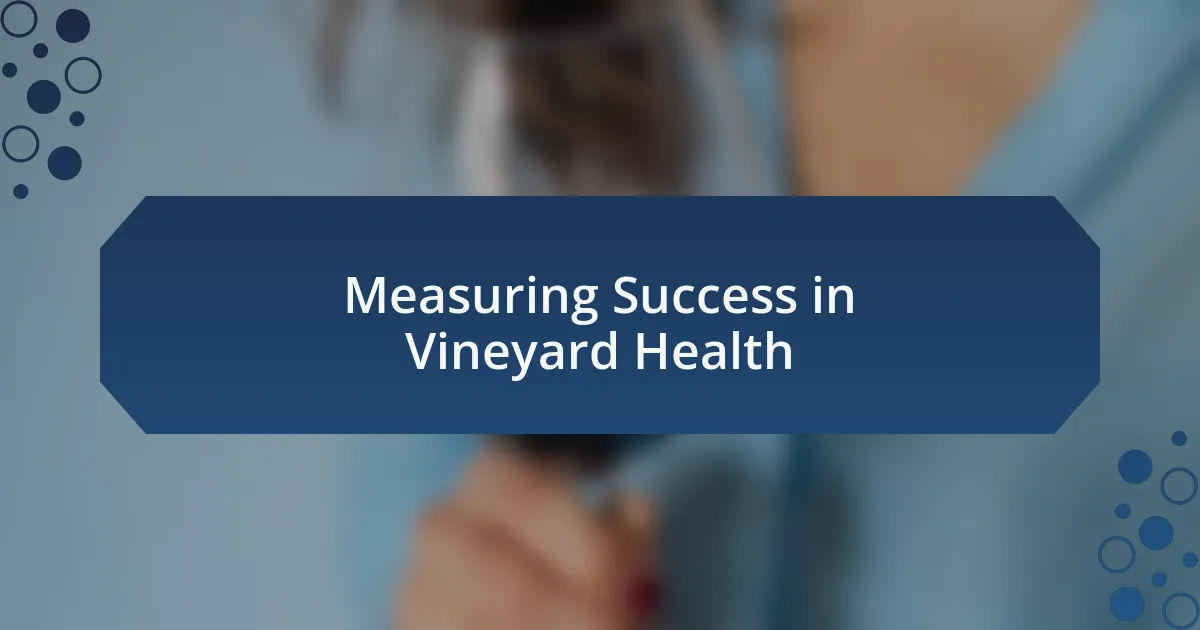
Measuring Success in Vineyard Health
Measuring success in vineyard health often boils down to observing visible changes in your plants. I remember the first time I noticed my vines producing larger clusters of grapes; it was a moment of pure joy. Have you experienced that rush of excitement when your efforts yield tangible results? It’s in these moments that I truly appreciate the intricate relationship between care practices and the health of the vineyard.
Crop density and leaf canopy assessment are also key indicators of success. During one growing season, I started monitoring the leaf coverage on my vines more closely. I realized that a well-managed canopy not only maximizes sunlight exposure but also promotes airflow, reducing disease risk. Isn’t it fascinating how small adjustments can lead to significant improvements?
Beyond the visual cues, I’ve found that tasting the wine made from my grapes is a deeply personal measure of success. The first sip of a new vintage—crafted from healthy vines and enriched soils—embodies the culmination of my efforts. How do you feel when you taste the fruits of your labor? It’s that connection to the wine itself that deepens my commitment to maintaining vineyard health.